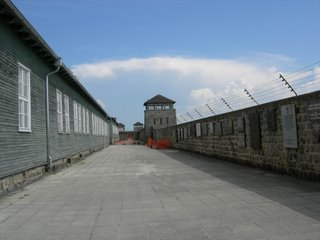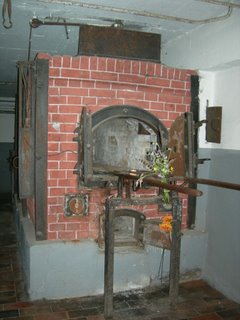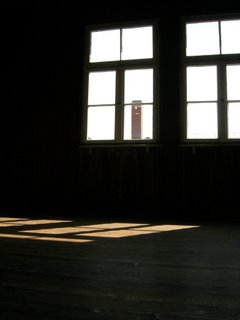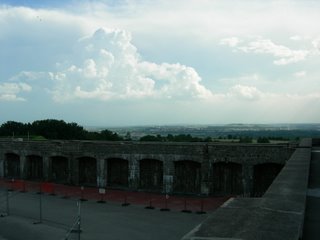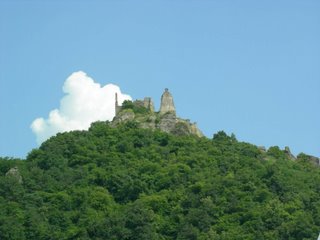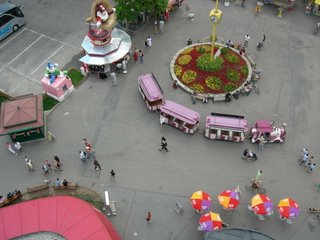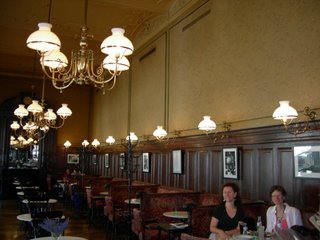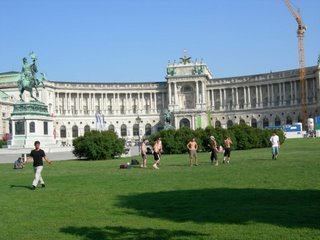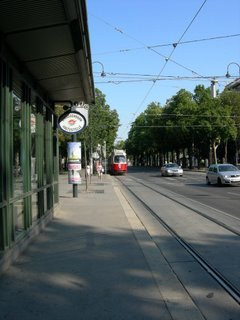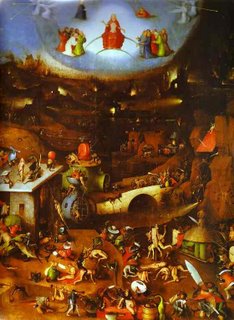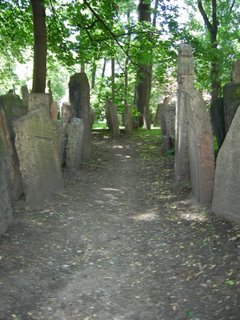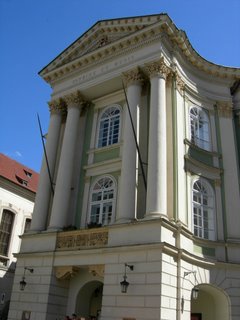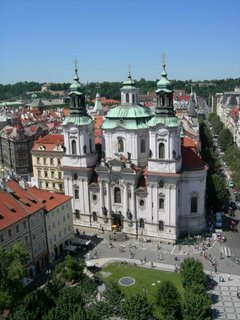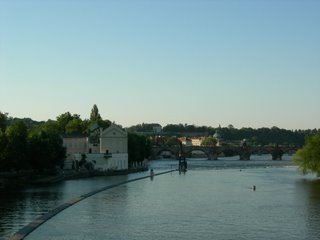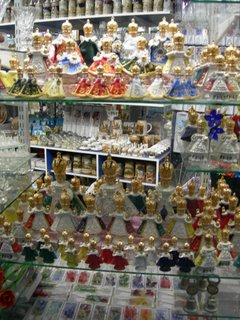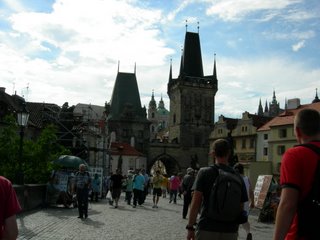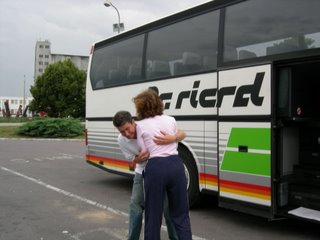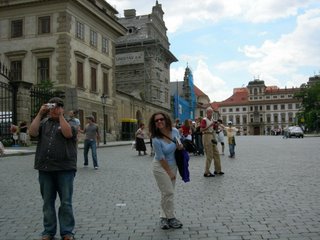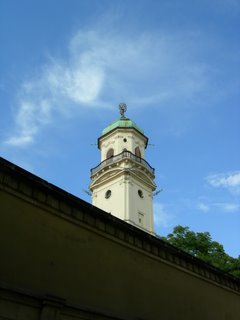Today I went out to Schonbrunn palace, built for the Hapsburgs by Fischer von Erlach. Maria Theresa made a few renovations, and it was also famous for having Empress Elizabeth (“Sisi”), the wife of Franz Joseph, living there. I don’t like all the hype about her; I wanted to hear more about the amazing Maria Theresa. I feel like there should be an entire Humanities lecture just about her, as a representative of the Enlightenment. There’s a famous portrait of her son, Joseph II, standing at a desk where Montesquieu’s “Spirit of the Law” is unrolled so the viewer can read it.
The entire palace was incredible. The funniest part of the garden was the “Roman Ruin” that was built in the 19th century, during the time when they thought it would be nice to pretend they were hanging around in some Roman ruins. Here’s a photo.
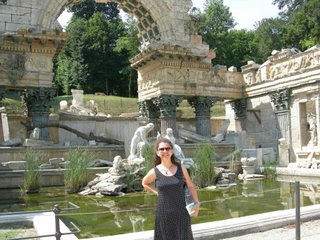
From Schonbrunn you can look back and see all of Vienna, especially from this lovely little mini palace called the “Gloriette” that sits on the hill above.
Mary and I are on the same flight to Heathrow in the morning, and our taxi leaves the hotel at 5. It’s boiling hot here, about 90 degrees, so we’re waiting for a few hours in our air-conditioned hotel room, cleaning up and packing, before heading out for our final evening in Vienna.
Thanks to everyone who has been reading my blog; I know it sort of wound down this past week as I was getting ready to leave, but I have many pictures to show and stories to tell when I return, and if you’re lucky I will have brought you a souvenir! Those of you who are taking my 12th grade “Literature and the Arts” class will be having a 5 week Don Giovanni fest as a result of this project, and I am sure next year’s tenth graders will get a lot of new information also.
Thanks to all my colleagues here at the institute, thanks to Dick Benedum and Julane Rogers and all the other teachers here, thanks to Marilyn and Alan for giving lectures that I will be ripping off next year, special thanks to Mary for being such a great roommate, thanks to all the Hapsburgs for providing so much history, thanks to Napoleon for invading, to Emperor Charles VI for creating such an amazing dynasty, thanks to Charlemagne for being the first Holy Roman Emperor, to Franz I for being the last Holy Roman Emperor, thanks to Leopold Mozart for schlepping your son around so everyone could hear him and he could then be exposed to other cultures of Europe, thanks to Baron von Swieten for giving
 Wolfgang all that Bach and other pieces of music, thanks to Lorenzo da Ponte for writing such funny lyrics to the operas, special thanks to National Endowment for Humanities for making this possible, huge thanks to Jim Schindler for encouraging me to apply and writing me a letter of recommendation (which obviously had great influence), thanks to Tintoretto for painting such amazing paintings, to Wagner, Verdi, and Donizetti for writing the amazing operas I saw while here, and most of all to WOLFGANG AMADEUS MOZART for providing the reason why we were all here!
Wolfgang all that Bach and other pieces of music, thanks to Lorenzo da Ponte for writing such funny lyrics to the operas, special thanks to National Endowment for Humanities for making this possible, huge thanks to Jim Schindler for encouraging me to apply and writing me a letter of recommendation (which obviously had great influence), thanks to Tintoretto for painting such amazing paintings, to Wagner, Verdi, and Donizetti for writing the amazing operas I saw while here, and most of all to WOLFGANG AMADEUS MOZART for providing the reason why we were all here!








